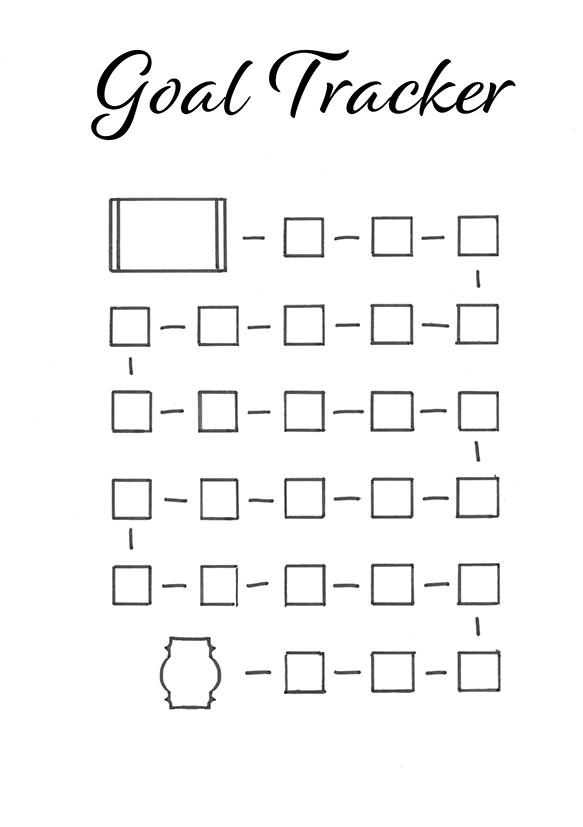Just a few minutes a day for more discipline, clarity, and happiness
Trackers can be a very useful component of any bullet journal. To “track” something simply means creating a list that is updated daily. These lists are usually created on a monthly basis, however, there are also weekly trackers that are incorporated into your weekly overviews, for example. There are countless possibilities for what and, above all, how to track.
In addition to the popular "Mood Tracker" (see Tombow magazine article), which allows you to monitor your mood over the course of the month, you can also track your sleep, books you want to read, series and movies or household chores, among other things.
The "Habit Tacker" in particular is a frequently used tool in bullet journaling. The focus there is on habits - i.e. things that you would like to do or achieve every day.
As with bullet journaling in general, there are no limits or fixed guidelines. Think about what things you would like to do more regularly or what could improve your well-being (e.g. reading, going to bed earlier, exercise). You can also include habits that you would like to reduce (e.g. eating sweets, spending money, meat consumption).
The most important thing is that your tracker must be tailored to you and help you.
Now you may already have some ideas about what you could track. The question now is: What does a tracker look like and how do you work with it?
Step 1: The look of your tracker
There are no limits to your creativity when designing the tracker. There are countless types and layouts for trackers in bullet journaling. From simple, minimalist lists and tables to colorful, painted works of art. Don't feel pressured - a simple table is just as helpful as an elaborately designed tracker.
Also consider whether you want to track your habits weekly, monthly or even for the whole year.
Step 2: Create your tracker
Once you have decided on a layout, you can actually get started straight away. If you have chosen a monthly tracker, it is a good idea to complete it on the first day of the month.
All you really need is a pen, e.g. a fineliner or ballpoint pen. The following items can also be helpful:
- Pencil + eraser (if you want to make a rough template first)
- Ruler or triangle
- Compasses
- Brush pens for headings and color highlighting
Once you have created a tracker, neither the layout nor the habits are set in stone. If you realize that some things were not practical or important for you, you can of course leave them out next time. That's the great thing about habit trackers: they can be adapted to your individual needs at any time.
Step 3: Work with your tracker
The easiest way is to look at your tracker every day and make the crosses for that day. I usually do this in the evening before I go to sleep. I like this ritual and feel good when I can check as many boxes as possible, as most of the things on this list don't come naturally to me. I have found that the Habit Tracker increases my motivation, because sometimes I do unloved things just so that I can tick a box in the evening. This also increases satisfaction, because every cross is a reward for your own discipline. In the long term, you may develop routines for things that you used to find difficult. Important: Don't ask too much of yourself! Start your habit tracker with just a few habits so that you don't take on too much at the beginning and then get frustrated. Try out different trackers or layouts and see what works for you in the long term.
Bullet Journal Tracker Templates
Download for free!
You want get inspired or save time by printing and pasting the templates? Just click on the picture of the respective tracker for download.
Book Tracker
from @eddyeule_by_hav
Sarah
- Sarah Wagener
Sarah Wagener is a social education worker who lives in north Hesse in Germany. When she’s not out horseback riding, you can find her at her desk with a pen or a brush in hand. For her, being creative primarily means relaxation as well as tackling new challenges. Above all, she loves variety – from bullet journaling to hand lettering and painting geometric elements with watercolors.




![[Translate to Englisch:] Erstellt von @eddyeule_by_hav Simple bookcase design with three shelves filled with books in different orientations and a banner for individual labelling.](/fileadmin/Content/article/2009_tracker/BookTracker_preview.jpg)





















